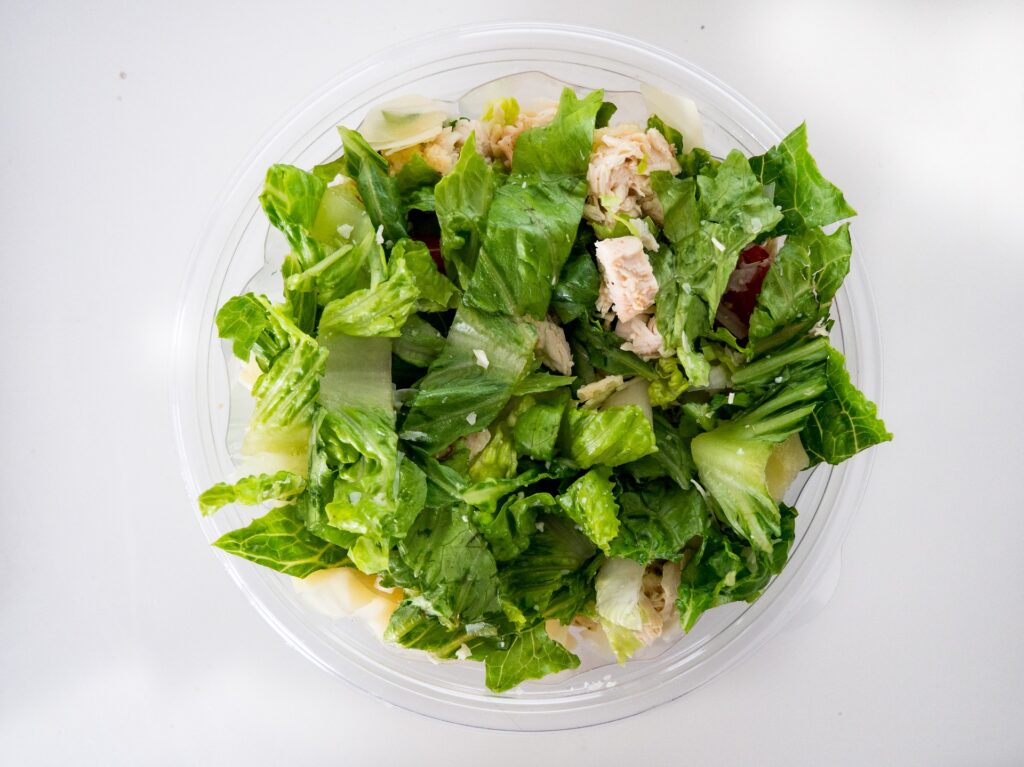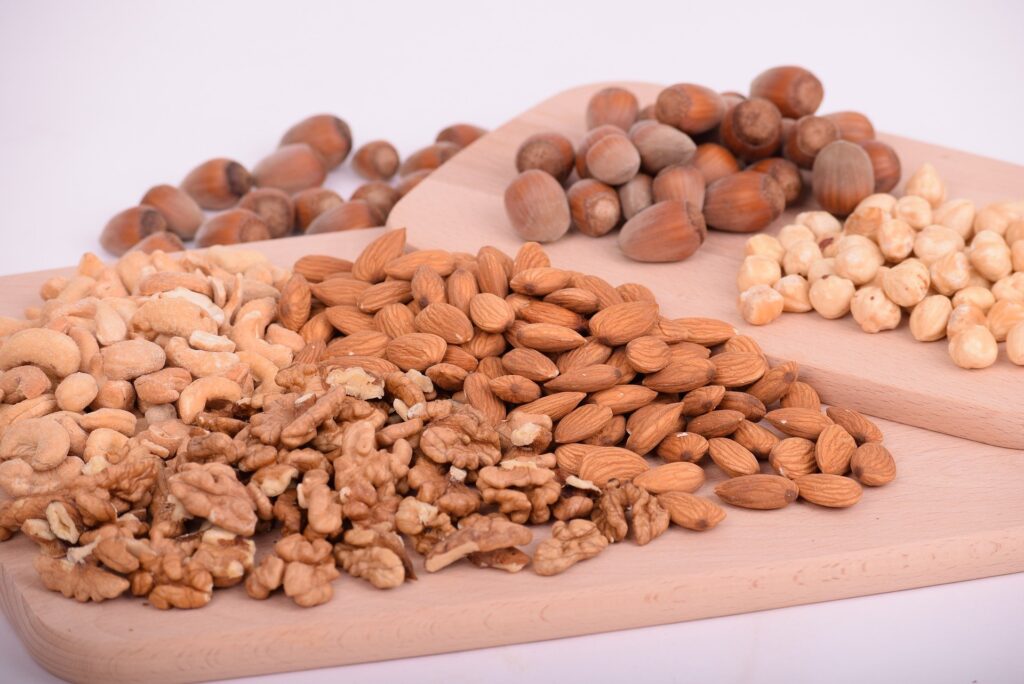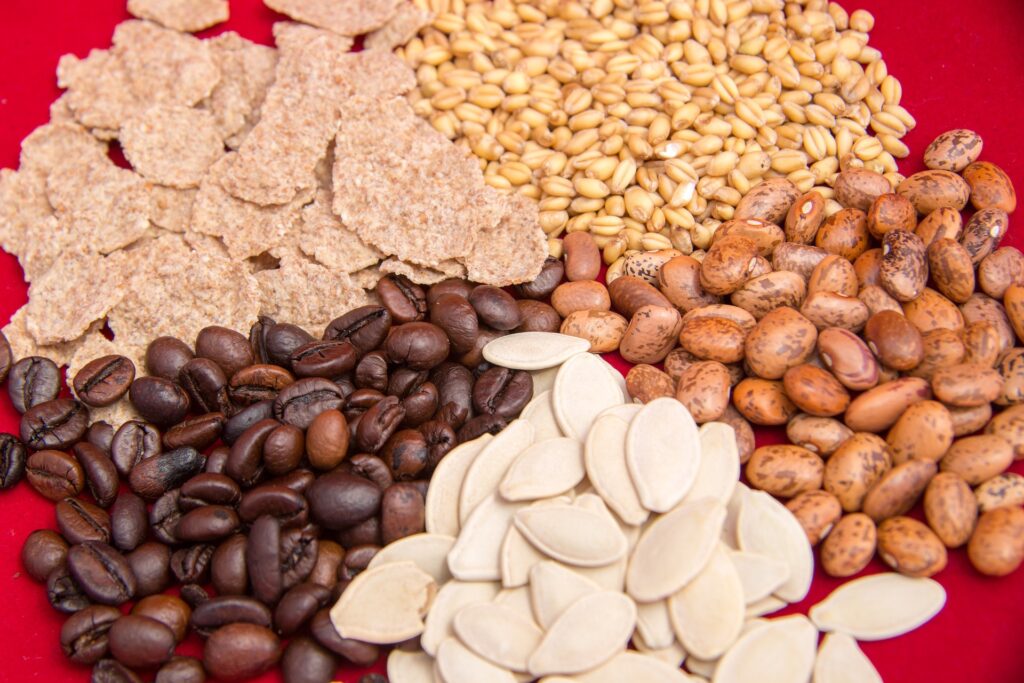Superfoods are those foods that are mostly plant-based but also some fish and dairy as well that are thought to be nutritionally packed and good for one’s health. These foods are usually “whole” or “real” foods which means they are in their original form and are not processed. But, there are no set criteria for determining what is and what is not a superfood, according to the American Heart Association.
You must be thinking about what it is that makes these certain foods contain that makes it super? Well, for starters, these foods contain a variety of nutrients, such as vitamins, minerals, and antioxidants, which are thought to ward off various health problems and illnesses. They also have healthy fats which help in the prevention of heart disease and fiber, thought to prevent diabetes and gut problems; and phytochemicals as well which can have numerous benefits on our health.
In addition, almost all of the foods that are considered superfoods are easy to find at your local grocery stores. And also are very affordable which makes them accessible to almost anyone.
History:
Where did the term superfood originate? Well, not from those who formally study about food and its nutrients, such as nutrition scientists and dietitians. The earliest recorded example of the use of the superfood term may have taken place in the early 20th century around World War I. It was used as a marketing tool for selling specific foods, dietary supplements promising an enhancement to health.
It is said that it all began when the United Fruit Company initiated an enthusiastic advertising campaign to promote its major import of bananas. And published informational pamphlets including points about Bananas and the Food Value of the Banana. Initially the company had advertised the practicality of bananas in a daily diet. Being cheap, nutritious, easily digested, available everywhere, good when cooked and not cooked, and sealed by nature in a germ-proof package. (Source-https://www.ucdavis.edu/food/what-makes-superfood-so-super )
The American Medical Association announced that bananas in a child’s diet would provide relief for celiac disease or cure it (gluten had not yet been discovered as the true culprit).
Very soon, bananas became an emblem of health, and mothers started making bananas a mandatory inclusion in their children and infants diet even if they did not have celiac disease.
Why are superfoods more prominent in the 21st century?
In the 21st century, there is a rapid increase in the sales and the consumption of these superfoods. Because they are perceived as healthy and said to have health benefits. It has created a billion-dollar industry. And this may be due to providing added confirmation of a consumer’s knowledge through various media and social channels about a healthful food, increasing the likelihood they will purchase it.
The survey also shows that about 80% of respondents see “food as medicine” and eat certain foods to prevent health problems like obesity, diabetes, hypertension and high cholesterol.
According to Mintel research, in 2015 there was a 36% increase globally in the number of foods and beverages launched that were labeled as a “superfood,” “super-fruit,” or “super-grain,” with the United States leading those product launches.
Why should you choose superfoods?
- Loaded with nutrients: Superfoods are foods that are nutritionally rich. This means that they provide a substantial amount of nutrients and very few calories. They are also brimming with minerals, vitamins, and antioxidants.
- Because of their high nutritional density, they are helps to protect your organs from toxins. Also, help lower cholesterol, regulate metabolism and reduce inflammation.
- Boosts Immunity: Superfoods help in strengthening and boosting your immunity. They are high in vitamins and protect your body from cold, flu, sinus etc.
- Enhances your skin: Eating a balanced diet has a major impact on your skin. Superfoods brighten your skin and prevent acne, pimples etc. The alkalizing property reduces redness, puffiness and gives your skin an evenness. It also prevents your skin from aging.
- Boosts energy: Superfoods boost energy and also reduce your cravings. This also cuts down your calories and promotes weight loss. It also increases alertness, focus and concentration. It keeps you supercharged the entire day.
You cannot get these health benefits just by eating these superfoods along with your poor diet. No, this is not how it works. You should include these superfoods as part of daily nutritional intake. It gives amazing health benefits only when consuming a healthy, balanced diet overall. You should eat a balanced diet rather than concentrating on individual foods.
Also have a look at the exotic vegetables that you will love! Exotic Vegetables and Fruits for exotic health benefits
Some of the most famous and nutritionally loaded superfoods are:
1. Berries:
Berries are small, pulpy, and edible fruit and among the most nutritious foods you can eat. There are various superfood berries such as blueberries, raspberries, tart cherries, cranberries, and strawberries. They are high in fiber and naturally sweet, and they are rich in colors. This means that they are high in antioxidants and have disease-fighting nutrients.
They have their own season, mostly grown in winters. But, they are available throughout the year in their dried and frozen form which are also as nutritious as their fresh form.

Health benefits:
- Berries contain a good amount of antioxidants, which protects your body cells from any free radicals. And may reduce disease risk.
- They may also improve blood sugar levels and insulin resistance when consumed with carbohydrate-rich foods.
- Furthermore, they contain fiber, which increases feeling of fullness, as well as reduces appetite and helps in weight loss.
- May also help in decreasing face wrinkles and other signs of skin aging related to sun exposure.
How to include them in diet?
You can add these berries in yogurts, cereals, and smoothies, or can eat them plain as snacks.
2. Fish:
Fish is not only a source of lean proteins and healthy omega-3 fats. But also an essential source of other nutrients like iodine, vitamin D and calcium, which are crucial for a healthy life.
Our bodies do not produce omega-3 fatty acids. That’s why we need to get them through food. Omega acid is prominently present in oily fish such as sardines, mackerel, salmon, trout, tuna and oysters who all are bumper sources of this health wonder.

Health benefits:
- Helps in boosting heart health by lowering blood pressure and reducing the risk of heart attack and stroke.
- Enhances brain function.
- May protect against depression, anxiety, Alzheimer’s and diabetes also.
- May help prevent inflammation and reduce the chances of arthritis.
How to include it in diet?
You can buy fresh, frozen, or canned fish. You can add cooked fish to your salads, also add the fish to rice or pasta. And smoked fish to your bagel or eggs for breakfast, and make fish tacos for Taco Tuesday.
3. Leafy greens:
Leafy greens, also called dark green leafy vegetables, or greens, are edible plant leaves. They are healthy vegetables that are rich in nutrients and fiber and low in calories and fat. You can eat some leafy greens raw, while others may require cooking. Dark, leafy greens are a good source of vitamin A, vitamin C, and calcium, as well as several phytochemicals.

Health benefits:
- The bioactive compounds in leafy greens can provide antioxidant and anti-inflammatory properties. Which may lead to a vast array of health benefits, such as a reduced risk for health conditions like stroke, anemia, high blood pressure, certain cancers, and diabetes.
- They may also help improve gut health, immunity, and heart, bone, and skin health.
How to include them in diet?
You can use them in salads. Make healthy bowls by adding greens to a bowl full of proteins, fruits, and whole grains. Also use them in wrap, soups, pizza. Sautes and stir-fries together with noodles, vegetables and seafood, juice, sandwich, chutneys, smoothies.
4. Nuts:
Nuts are a good source of plant protein. These include hazelnuts, brazils, walnuts, almonds, pecans, etc. They also contain monounsaturated fats (MUFA), protein, fibre, calcium, iron, selenium, magnesium and vitamin E. In addition, most of the fat in nuts comes from heart-healthy monounsaturated and polyunsaturated fats which is really good for your heart function.

What are the health benefits of nuts?
- Almonds are a rich source of antioxidant vitamin E, a good intake of almonds has been associated with a healthy functioning of the heart.
- Peanuts contain a flavonoid called resveratrol, which may have anti-cancer properties.
- Walnuts also contain an antioxidant- ellagic acid, which is also linked to reducing free radicals in your body.
- Brazils are one of the richest sources of antioxidant selenium, that’s been linked to lower rates of heart disease and cancer.
- These nuts may also help in lowering the risk of developing type 2 diabetes. Because their fibre and magnesium content which helps to keep blood sugar and insulin levels high.
How to include them in diet?
You can add nuts in your oatmeal or yogurt. Have them as your snack, or nut butters such as peanut, almond, or cashew.
5. Olive oil:
Olive oil is an oil which is compressed from olives. This oil is super healthy especially for those who have heart disease or are at a high risk of developing it. This is a good source of vitamin E, polyphenols, oleocanthal vitamin K. And monounsaturated fatty acids, all which help reduce the risk of heart disease.

What are the health benefits of Olive oil?
- Olive oil is known to have anti-inflammatory properties and may help in improving blood vessel function and reduce bad cholesterol, improve insulin sensitivity, and lower high blood pressure.
How to include it in diet?
Use olive oil in place of butter or your regular oil in pasta, or for toasting your breads, or in salads for dressings, or rice dishes or for sauteing vegetables.
6. Whole grains:
Whole grains are unrefined cereals which mean that they contain the germ, bran and the endosperm and are less processed. They offer a complete package of health benefits. These are a good source of both soluble and insoluble fiber, B vitamins, minerals, and phytonutrients.

What are the health benefits of whole grains?
- The bran and fiber in whole grains slow down the breakdown of starch into glucose. Which in turn maintains a steady blood sugar which makes them suitable for diabetic patients.
- Fiber also helps in lowering cholesterol and improves gut health.
- Phytochemicals and essential minerals such as magnesium, selenium and copper in whole grains may help in providing protection against some cancers.
How to include them in diet?
You can have oatmeal or salted oats for your breakfast. Bulgur in salted or sweet form. Quinoa in salads or cook it with vegetables, oats chapati or wheat chapatis, etc.
7. Yogurt:
Yogurt is a complete superfood which you can be include in your daily healthy diet. It is a versatile superfood along with various benefits. It is a good source of calcium and protein, and also contains probiotics and prebiotics. These can protect the body from other, more harmful bacteria.

What are the health benefits of yogurt?
- Yogurt is rich in zinc and has anti-inflammatory properties. So, it can help relieve sunburn and restore your skin.
- It boosts digestion and can reduce the effect of diarrhoea and bloating. It also helps healthy bacteria to flourish in your gut which improves the gastrointestinal system.
- Yogurt is also rich in calcium which makes it excellent for strengthening your bones.
- Prebiotics and probiotics in yogurt can improve your sleep. And protect your body against the negative effects of stress, which are important to maintain a strong immune system and keep viruses at bay.
How to include it in diet?
You can eat plain yogurt with your meals. Or you can use yogurt in place of mayonnaise or sour cream in dips or sauces.
8. Cruciferous vegetables:
Cruciferous veggies are a diverse group that includes broccoli, Brussels sprouts, cabbage, cauliflower. Also, collard greens, kale, kohlrabi, mustard greens, radishes, and turnips. Consuming these types of vegetables, which are packed with nutrition, support a healthy diet and will help reduce obesity. They are an excellent source of fiber, vitamins C, E, K, folate. And phytochemicals including indoles, thiocyanates, and nitriles, which may prevent some types of cancer.

What are the health benefits of cruciferous vegetables?
- Cruciferous vegetables are low-calorie, and rich in fiber which helps in weight loss.
- Cruciferous vegetables are also good sources of plant-based compounds. This may help in lowering inflammation and reduce the risk of developing cancer.
- They are also rich sources of compounds known as glucosinolates, which may help to fight cancer.
- Also, some researchers have suggested that sulforaphane present in cruciferous vegetables. This may play a major role in preventing prostate and colon cancer.
How to include them in diet?
You can steam or stir-fry them and add healthy oils and herbs and seasonings for flavor. You can also try adding a cruciferous vegetable medley to soups, casseroles, and pasta dishes.
9. Legumes:
Legumes can make a quick, cheap and healthy high-protein meal with a range of health benefits. They have a broad category which include lentils, chickpeas, kidney beans, black beans or cannellini beans, as well as soybeans and peas. They are also an excellent source of fiber, folate, iron, magnesium and plant-based protein.

What are the health benefits of legumes?
- They are full of fibre which give satiety to your stomach. And assist in cholesterol control and promoting a healthy gut.
- Their glycemic index is also low and helps in blood glucose control, and improves insulin resistance.
How to include them in diet?
You can add them to salads, soups, and curry.
10. Tomatoes:
A tomato is a nutrient-dense superfood that offers benefits to a range of bodily systems. They are the fourth most popular fresh-market vegetable behind potatoes, lettuce, and onions. They contain carotenoids such as lutein and lycopene. There are different types and sizes of tomato, and they can be prepared in different ways. These include cherry tomatoes, stewed tomatoes, raw tomatoes, soups, juices, and purees.

What are the health benefits of tomatoes?
- Tomatoes contain an abundance of minerals and vitamins that are good for our body. There is a high amount of vitamin C in tomatoes, which strengthens the immune system. And protects our body from infection.
- The lycopene in tomatoes has many health benefits and acts as an antioxidant, promoting heart health.
- Lycopene fights the free radicals that are damaging our cells and interfering with normal cell growth and activity.
How to include superfoods in diet?
You can try tomatoes in a salad or as a tomato sauce over your pasta. You can also add them in stews and soups.
Where can you buy these superfoods?
Nowadays, there are many ways through which we can easily buy these well-known superfoods. One of those ways, is buying them online platforms which can get them delivered to you in a very small amount per say maximum 24 hours after placing your order. The online platforms from which you can buy superfoods are:
- Amazon Retail.
- TrueElements.
- G-Mart Store.
- Bagrrys India Private Limited.
- By Nature
- Big basket
- Organic India special
- Grofers
- Nourish you
Another way is to buy them directly from markets, grocery shops or “sabzi mandi”. You can buy them fresh and also inspect them before buying yourselves.
What to look at before buying the superfoods?
First, look for nutrition labels: The most important thing while shopping for superfoods is to check for the nutrition label. When reading the nutrition label, be sure to find the % Daily Values (%DV) of the minerals, vitamins, and nutrients in the superfood you’re interested in. This is because many individuals choose to consume specific superfoods that contain an important nutrient they may lack. It is beneficial to know how much of that nutrient you’re actually getting in each serving.
See, if it is a whole food or processed: Especially when purchasing superfoods, it’s important to make sure that what you’re consuming is raw. And made with whole foods, to get the greatest nutritional benefit!
Check, to which company does the superfood belongs: All superfoods are not made equally, so it’s a good idea to do some research about the company producing the food you’re buying.
Buy seasonal fruits and vegetables: Buy your produce in season and from local sources to ensure the highest nutrient content.
If you are struggling shedding weight. You can talk to us by taking this assessment: Click here
For more information click here

